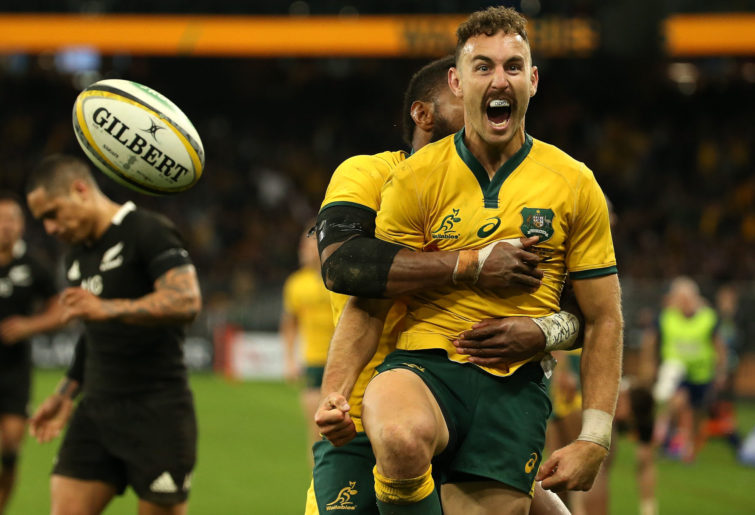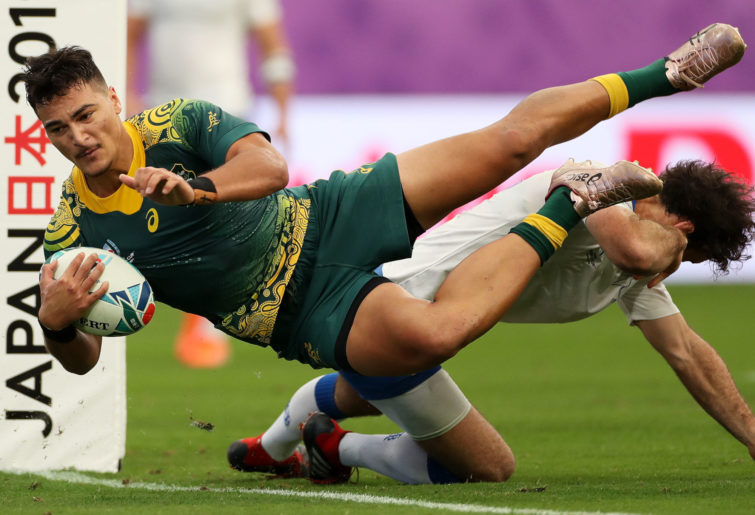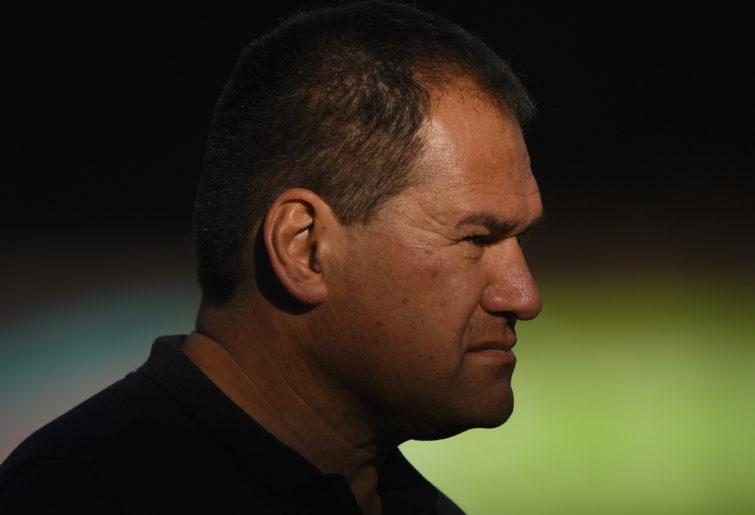In this article, I will look at the possible back lines that Dave Rennie may decide to opt for in 2020.
In a nutshell, his conundrum is does he back youth or experience?
The theory for a long time is that you should not throw young players to the wolves. Doing so can damage their confidence and do potentially permanent damage to their reputations. History is littered with players who were thrown in too early, and who either moved offshore soon afterwards or whose reputations never recover even when their play improves.
A team full of youth cannot be expected to perform against seasoned professionals. If players get used to a losing environment, they may never perform to their potential.
Another advantage of experience is that even when players are not in form, they can rely on their experience. This is crucial at the international level. The importance of this should not be understated.
The All Blacks won the 2015 World Cup with an ageing team, including players like Dan Carter, who had missed a lot of rugby in the 2011-15 World Cup cycle, and Ma’a Nonu, who was notorious for his poor Super Rugby form.
But that win, and the importance of experience, also shows the importance of backing youth and allowing it to grow experienced together. With the exception of Nehe Milner-Skudder, that back line had played together for most of the World Cup cycle. The players had learnt the intricacies of each other’s games.
A role of the coach has to be to navigate youth and experience. They have to know when it is appropriate to take risks with youth, to accept their errors of inexperience and to back them to improve long term. They also have to know when experience is more important. Teams cannot be expected to make good decisions, and youth cannot learn without the assistance of experience around them.
With that in mind, I consider the different back lines we may see Rennie opt for if there are internationals in 2020.
Australia’s experienced back line
9. Nic White (30)
10. Matt Toomua (30)
11. Marika Koroibete (27, turning 28 in less than two weeks)
12. James O’Connor (30)
13. Tevita Kuridrani (29)
14. Tom Banks (26)
15. Dane Haylett-Petty (31)
Of that back line, I suggest that only Nic White, Toomua or O’Connor at inside centre (not at ten!), Kuridrani and Banks are realistic prospects to start in 2023. That means that if Rennie opts for experience this year, he is suggesting that he will only have two seasons before the World Cup to find a winger, fullback and flyhalf.

(Photo by Paul Kane/Getty Images)
The back line is very strong defensively, outside from the outside backs. It has natural distributors at nine, ten, 12 and 15. All players outside of Koroibete and Kuridrani having kicking games. All of these players have performed well in internationals in the past.
The question is whether the experience in the back line is worth sacrificing the additional year of letting young players develop together?
Australia’s youth back line
9. Nic White
10. Noah Lolesio/Will Harrison
11. Jordan Petaia
12. Matt Toomua/James O’Connor
13. Tevita Kuridrani
14. Tom Banks
15. Jack Maddocks
Nothing more needs to be said of Petaia. Despite having almost no rugby in 2019 or 2018, he was one Australia’s best players at the World Cup. He grew up playing fullback so is strong under the high ball, he breaks tackles and distributes like a centre, and has the speed for wing.

(Dan Mullan/Getty Images)
Both Lolesio and Harrison are likely to develop into superior flyhalf options going forward than Toomau or O’Connor. They are both natural distributors off both sides, have powerful running games, are capable of kicking well out of hand and are strong defenders for flyhalves.
Harrison’s kicking is particularly notable. He is blessed with a left boot that is both accurate and powerful off the tee and in terms of tactical kicking. More importantly, he demonstrates astute and mature game management well beyond his experience. This could be critical for the Wallabies, who for most of the period since 2008 have not been able to reliably play in the right parts of the field, win kicking duels or kick over 80 per cent of their goals. He also appears a little faster than Lolesio, and may have the longer pass.
Lolesio has the ability to hold defence, run straight and pass either at the line or offload after contact. This is critical for the success of a team’s attack in the era of rush defences. Unless the flyhalf is capable of doing this reliably, the rush defence will simply flatten the ten or second receiver again and again. This allows the defenders to force the attacking team back phase after phase and eventually force an error. This, as much as the lack of a tactical kicking game, is a problem that meant Michael Cheika’s attacking rugby never worked.
Both Harrison and Lolesio have some wonderful characteristics to their games, but clear weaknesses. Harrison is not nearly as comfortable taking on the line, while Lolesio is not as strong off the tee or as confident in decision making in terms of game management, despite his good kicking.
Will Rennie want the young tens to spend an extra year working on their weaknesses, or is he willing to take a chance on one or both, to accept they will make errors and give them the time to grow into the role of an international ten?

(Photo by Stu Forster/Getty Images)
Maddocks is not as good as Haylett-Petty under the high ball. Nor does he possess the same ability to break the first tackle. I also maintain he has struggled to show consistent form in recent seasons.
This stems from having too many options – because he can always pass, kick, run or offload he is more likely to opt for a high risk, high reward play when a more conservative decision may be preferable. This is often seen with talented all-court players in tennis. They can often be outplayed with players with more limited games, because the more limited player is by necessity forced to opt for high percentage plays rather than the creative solution. This often results in the all-courter peaking at an older age than the more limited base-liners.
But the last two weeks he has played like the player we all hoped he might become. He has the skills and vision of a flyhalf – he can pass under pressure off both sides, offload after contact and kick long and accurately. He is no slouch off the mark and is strong under the high ball. If he is selected for the Wallabies we may see more poor decisions until he really matures than we would get from Haylett-Petty or Banks at fullback, but also far more genius decisions.
Playing him, Banks and Petaia in the back three would mean the Wallabies would have three dangerous ball runners who can run, pass and handle high balls.
Summary
Rennie has a big decision to make in terms of back line selections in 2020. Does he opt for youth and form, or for experience?
If youth, it is very possible that every first choice player in 2020 may be first choice in 2023. This would result in players having four seasons together by the World Cup. But he does risk his young players losing their confidence or a string of poor results resulting in a losing environment while they develop at that level.
If instead he prefers experience, the young players will have time to develop their games before becoming consistent internationals. But this would rob the Wallabies of a year of building cohesion in the back line, and questions remain whether our experienced options have the talent to excel at the international level.
I cannot honestly say which would be the better decision. But I await Rennie’s first back line with keen interest. With the way that rugby has become more and more about the four-year World Cup cycle, what Rennie does in 2020 could set him up for success or failure in his role as Wallabies coach.































































































